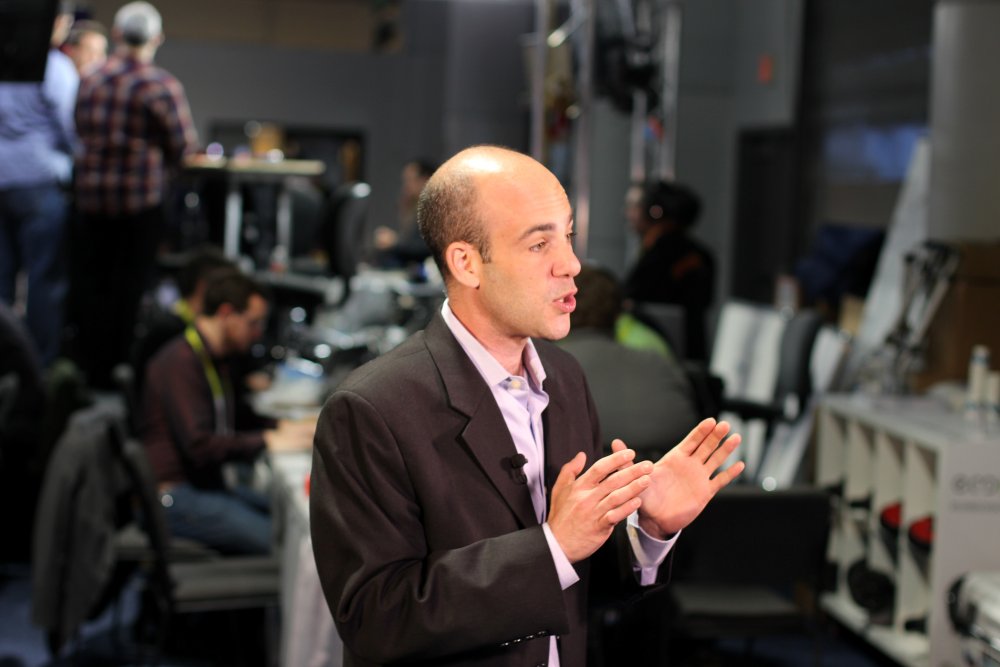“In some ways, the sharing economy is a return to the pre-modern age, when town groups needed to share assets to survive. They developed trust through rehashed associations with individuals they had known every one of their lives. Present day computerized interchanges enable sharing to occur over a worldwide town of purchasers and suppliers, with trust built up through electronic associate surveys.” John Hawksworth, Chief Economist, PwC UK, Editor PwC Economic Outlook distributions.
The community oriented economy – or the sharing economy-is a term we’ve been hearing and utilizing a considerable measure in the business world. On the off chance that you’ve utilized administrations, for example, Uber or Airbnb, you’re basically part of the buzz. The term community economy alludes to an innovation empowered financial arrangement of distributed (P2P) sharing of assets. The sharing economy is comprised of a system of stages that enables shoppers to get whatever item or administration they need from each other without experiencing an outsider association. This problematic module offers new chances of business, social equity, and natural arrangements. Be that as it may, its light-footed and crowd sourced dynamic pith sheds a sorry excuse for danger to ventures that fall behind and don’t have any desire to play along.
As per a PwC ponder, community oriented economy will develop from a US$15 billion income area in 2013 to a $335 billion in 2025. Conventional banks still vigorously rely on upon an out-dated framework that is exchange unusual, where the way of the exchange itself is the concentration of its endeavors. In spite of the disturbances happening today in web based keeping money, the industry has advanced next to no with regards to its business modules and administrations advertised. The bank still profits from loaning it at a higher financing cost than they pay investors or than what they acquired it for. Then again, money itself developed from being gold-based, money based, card-based, and afterward to what it is today, a point-based advanced calculation, like any corporate devotion program.
The present spryness of money opens up the entryways of plausibility for what is currently being authored ‘community oriented back,’ which is considered as the monetary segment of synergistic economy. As indicated by Collaborative Lab, shared fund is separated into seven principle parts:
- Social Lending – A gathering of stages that empower clients to take land, independent company or individual credits from people in general. Loan specialists put resources into every individual or venture in littler additions, and that thus limits hazard.
- Crowdfunding – We’re comfortable with stages, for example, Kickstarter and Indiegogo for innovative undertakings, however crowdfunding is additionally extending to cover private ventures, metro and individual.
- P2P Currency Transfer – Utilizing a trusted operator arrange (TAN) empowers clients to send and get portable installments safely, advantageously and cost-successfully.
- P2P Insurance Startups – Companies like Friendsurance are attempting to make protection an all around upgraded social experience rather than the wasteful weight it is today.
- P2P Digital Currency – Bitcoin is not by any means the only contender in this field; decentralized virtual monetary forms are turning into a vital piece of the online biological community.
- P2P Payment Platforms – A standard of brought together instruments is being set up that empowers organizations and people to acknowledge and oversee online installments.
- P2P Payment Networks – For portable installment security, these outsider installment systems are turning into the favored technique for installment of decision for online exchanges.
In the event that you consider the previously mentioned seven alternatives, we understand that a great deal of the factors that control communicant fund are additionally benefits given by customary banks. The accommodation of these client situated administrations are driving more individuals to surrender out-dated physical bank administrations, and swipe their way into advanced fiscal administration and control. Customary media couldn’t battle online media, so all things being equal they turned out to be a piece of the pattern and now and again, were even early adopters. Thus, we’re at the beginning of another time of saving money monetary foundations don’t have a decision however to acknowledge these new elements and expand on top of it. The principle mishap of customary managing an account is the solidness of its administrations in contrast with the spryness of computerized administrations. As we rebuild these managing an account business modules in the computerized universe, adaptability must be the prevailing quality of the new frameworks instituted.
The way toward patching up a conventional bank into the advanced scene would comprise of utilizing its present administrations to meet the quick paced dexterous computerized world. As indicated by an A.T Kearney examination, the achievement of advanced change for conventional keeping money depends essentially on three fundamental ideas: customer eccentricity, open development, and authoritative adaptability.
1. Customer Centricity – Banks confront an enormous test with regards to moving its way of life far from the complex value-based frameworks, and concentrating more on making a consistent and agreeable client encounter. Clients today need to comprehend the exchanges they are participating in, connect with them outwardly and utilize them in a self-benefit way at their own particular comfort and pace.
- Client Experience Focus keeping in mind the end goal to make that move in center, and draw nearer to client desires as well as envision them, shaping everybody in the bank to think ‘customer first’ is an unquestionable requirement. This can be accomplished by setting up the idea spaces for procedures like reshaping administrations and offers. These endeavors are guided by concentrated instructional courses, CEO exchanges and level headed discussions over achievability of recommended arrangements.
- Another essential step towards a consistent client experience is completely tuning in to the real clients on all touch-focuses accessible: online networking, web, versatile, call focus, branch overviews, and nearer live customer connection. Hoarding information is the most essential piece of building the correct arrangements. Each snippet of data accessible gives further bits of knowledge on what bearing to maintain a strategic distance from and which course to take. The capacity to catch the maximum capacity of new innovations begins with lithe information mining IT frameworks and cross-practical groups contemplating client wishes.New Branch Roles The computerized change is generally a social move of outlooks and practices, with new abilities required to meet the requests of the new associated self-benefit client that renders an exchange benefit setting futile. The eventual fate of the branch usefulness is to transform from a space in which exchanges occur into a space in which banks convey high esteem exhortation offered by monetary specialists. The up close and personal client collaboration would in any case be the premise on which enormous monetary choices are made, and the bank’s part is to make that condition of solace and trust to channel that level of correspondence.
2. Open Innovation
With the exponential speeding up at which the synergistic computerized economy is progressing, conventional banks ought to create (and keep up) spaces in which advancement is fed. This fight is battled on two principle boondocks: inward and outside. Inside, executing comprehensive advanced groups, incorporating IT and promoting is the substance of the computerized age, where administrations and arrangements are made in light of evaluated data gathered from numerous touch-focuses into easy to understand ordinary items. An advanced board council ought to be shaped to champion development, arranging, checking and execution of new thoughts. On the outer outskirts, an open development environment ought to be made. The bank has the benefit of its wide system of accomplices that give the vast majority of the administrations in the market. This system ought to be extended to incorporate ‘blade tech’ new companies that are putting forth simple direct monetary arrangements and will wind up noticeably real contenders this forthcoming year if not brought into the crease.
3. Hierarchical Flexibility
The adaptability quality should be actualized mechanically and hierarchically for it to produce results. The exponential quickening of new innovations and the contracting time-to-market direct the need of having a coordinated IT stage at the focal point of the advanced managing an account working model, with adaptable groups working around it to make customized client arrangements. A light-footed IT stage is a need here with difficulties, for example, the exponential development in activity and information and the ascent of continuous information crosswise over channels. The requirement for frameworks with constant data preparing and improved information administration abilities increments. Not just the IT stage is a basic decision at this stage, yet the group structure around it and the objectives it’s being utilized for. Preferably, the group ought to be taking a shot at breaking down operational procedures, client conduct and utilizing them to discover approaches to enhance and advance keeping money operations to make it more client driven.
Long haul vision and here and now execution the advanced change occurs with a considered arranging of a long haul guide that stops all the fast wins along its way. Conventional banks have two fundamental methods for producing deals: one would be strategically pitching and up pitching to its current customer base, the other is fascination of new clients. To accomplish the previous in the computerized age, the endeavors ought to concentrate on customizing the administrations and being applicable to every client’s needs. With respect to the last mentioned, it is accomplished by growing and improving all channels, branches, ATMs, call focuses and in particular the advanced wilderness, which ought to be dealt with as the greatest branch for each bank. This is the fleeting vision of execution.
With respect to the long haul guide, the bank ought to work its approach to extending its administrations past the snapshot of exchange to cover its pre and post stages. The pre-exchange stage is by offering answers for regular issues through its huge association system and going about as a money related counselor to the client. For instance, they may offer you home hardware that is inside your financial plan. The exchange stage is putting forth the innovation required for the client to peruse these additional esteem arrangements through their keeping money touch-focuses, for example, a versatile application. For instance, they’ll peruse the application for a wide range of items in a m-business sort of setup that offers included an incentive for costumers profiting from the bank’s association arrange. With respect to the post-exchange stage, it can be by giving simple installment portion, reports on your money related circumstance and guidance for future buys.
There’s talk flying around the computerized circle that the sharing economy of assets will some time or another supplant our out-dated surrey financial framework. It’s too soon to decide the legitimacy of this, however one thing we know is that it is rivals the saving money administrations. In this manner, banks ought to move advanced from being simply one more venture into being its center esteem, while striking a harmony between ‘the same old thing’ and computerized interruption.






